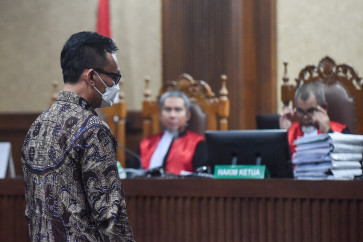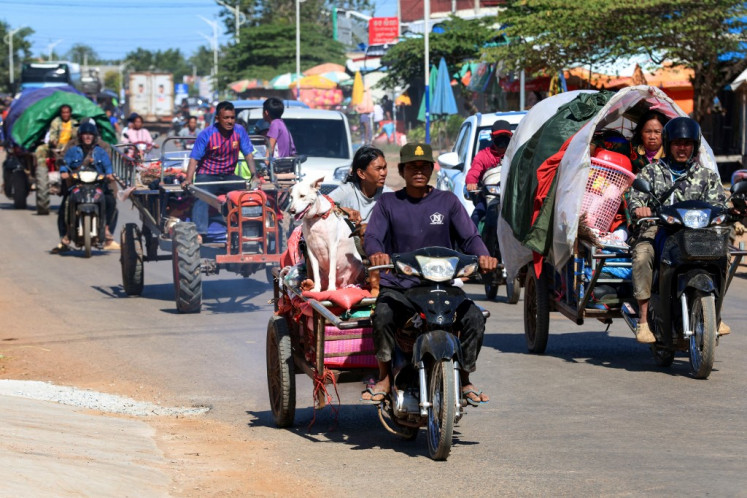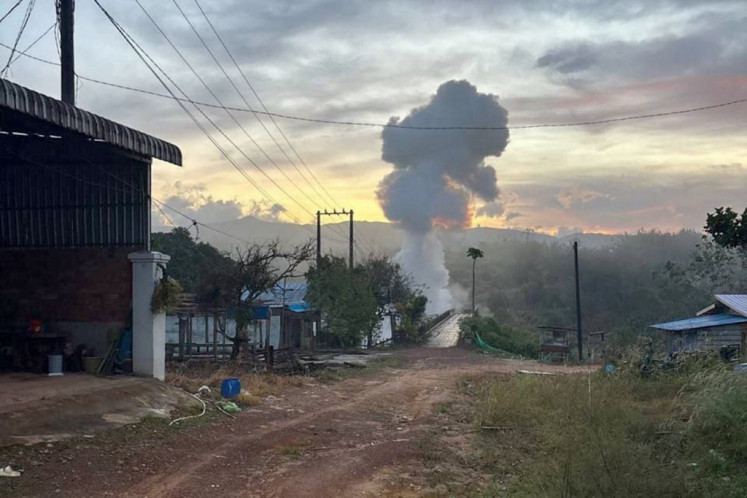Popular Reads
Top Results
Can't find what you're looking for?
View all search resultsPopular Reads
Top Results
Can't find what you're looking for?
View all search resultsNew book tells of Bali airport's humble beginnings
The busy Ngurah Rai International Airport in Tuban, Bali, started out as a 700-meter-long airstrip built by the Dutch colonial administration in the early 1930s, a new book reveals
Change text size
Gift Premium Articles
to Anyone
T
he busy Ngurah Rai International Airport in Tuban, Bali, started out as a 700-meter-long airstrip built by the Dutch colonial administration in the early 1930s, a new book reveals.
More than 80 years later, that simple airstrip has become the second-busiest gateway into Indonesia, serving around 77,000 domestic and international flights and almost 10 million passengers a year.
The new dual-language book Ngurah Rai Airport Bali: Gateway to Paradise 1930-2010 recounts the history of the airport, and has been launched to commemorate airport operator PT Angkasa Pura I's 46th anniversary on Feb. 20.
Angkasa Pura general manager Heru Legowo said the 150-page book was written in Indonesian and English.
"In the past, the airstrip was called South Bali by the Dutch, while the locals called it Pelabuhan Udara Tuban, since it was located in Tuban village," he said.
The book touches on the airport's use as a military base by the Dutch.
"However, it also expanded as a gateway for European visitors, artists and scholars visiting Bali in particular," Legowo said.
When finished, the airstrip could only handle small planes, but five years later, in 1935, the Netherlands Indies Airways, or Koninklijke Nederlandsch-Indische Luchvaart Maatschappi (KLM), kicked off a regular flight to Bali.
At the same time, Australian airline Qantas Empire, plying the Singapore-Darwin route, proposed transiting at Bali. Prior to World War II, the airfield functioned as a transit military base for Dutch troops from Java, particularly from the Surabaya base.
In 1942, Japanese troops took over the airfield and extended the airstrip to 1,200 meters.
Soon after independence in 1945, then president Sukarno decided to develop the Bali airfield into an international-standard airport serving long-haul flights.
The airport became one of his mega projects, in addition to the Sanur Beach Hotel, the Gelora Sports Complex and the National Monument, the latter two in Jakarta.
The airport began serving international flights from 1959. Sukarno, himself half Balinese, commissioned a team of engineers to extend and renovate the airstrip and the terminal.
Part of Kuta Beach had to be reclaimed for a 2,500-meter-long and 45-meter-wide runaway. On Aug. 10, 1966, Bali officially became as an international airport.
"When Mount Agung erupted, the airport served as an international relief center," said publisher Alex Pudjianto.
The construction of the airport was completed in 1969 and was inaugurated by then president Soeharto. It was named in honor of Balinese independence fighter I Gusti Ngurah Rai.
It cost US$13.19 million to build a the time, and is now undergoing massive renovation to accommodate wide-bodied aircraft such as the Boeing 747, 757 and Airbus A340.
The current domestic terminal will be turned into an international terminal measuring 120,000 square meters.










